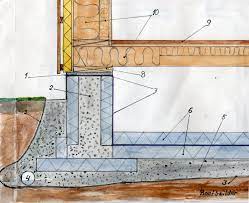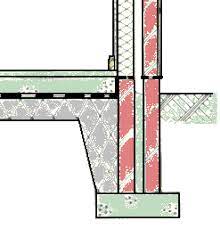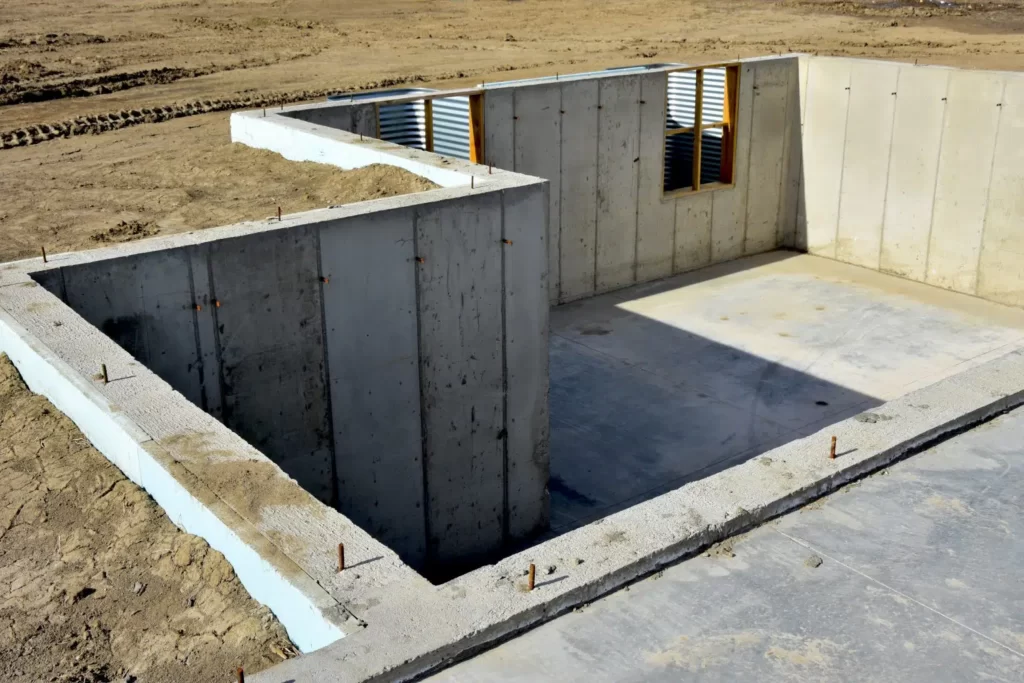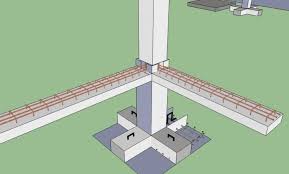When embarking on a construction project, whether it’s building a new house or extending your existing one, choosing the right foundation is a crucial step. A foundation provides structural support, helps insulate the house, and protects against moisture and radon. we will be delving into the various types of house foundations, their pros and cons, and factors to consider when making your decision.
Common Types of House Foundations
1. Crawl Space Foundation
A crawl space foundation creates an air pocket between the ground surface and the house’s framework. This space helps insulate the house and can be used for things like district heating and drainage. It’s important to ventilate the air between the house and the ground to prevent moisture damage.

Pros:
Provides insulation from the cold ground.
Enables easy access to utilities like district heating and drainage.
Facilitates inspection and maintenance of the house’s underside.
Cons:
Requires proper ventilation to prevent moisture damage.
In humid climates, there is a risk of mold in the crawl space.
2. Slab on Ground Foundation
A slab on the ground is a simple foundation where a concrete slab forms the subfloor of the house. This type of foundation is commonly used when the house doesn’t have supporting beams. It provides a large construction area and reduces the risk of subsidence.A slab-on-ground foundation is a popular choice for houses without supporting beams.

Here are its pros and cons:
Pros:
Provides a stable and level surface for the house.
Reduces the risk of subsidence due to its large construction area.
Offers a cost-effective option for homes with simple designs.
Cons:
Installing new water and sewer lines can be challenging.
Requires careful insulation to prevent heat loss.
3. Basement Foundation
A basement foundation is similar to a slab on the ground but includes a space with standing height above the slab, creating an extra floor.
Basements require good drainage and insulation to prevent moisture issues. They provide additional space for things like a boiler, storage room, or garage

Consider the following pros and cons:
Pros:
Provides ample additional space for storage, a garage, or utilities.
Offers flexibility for future use or expansion.
Adds value to the property.
Cons:
Requires effective drainage to prevent moisture issues.
Involves additional construction costs due to excavation and insulation requirements.
4. Plinth Foundation
A plinth foundation supports the house’s weight through concrete plinths. This type of foundation is suitable for uneven or sloping terrain. It’s commonly used for summer cottages and colonial cottages.

Let’s examine its pros and cons:
Pros:
Provides stability on uneven ground.
Suitable for buildings in mountainous areas or on sloping plots.
Allows for customization according to the specific site requirements.
Cons:
Requires careful planning and construction to ensure proper load distribution.
May be more suitable for summer cottages or smaller structures rather than full-scale houses.
Choosing the Right Foundation
1. Soil Type and Substrate Considerations
The foundation you choose should match the type of soil on which the house will stand. Different foundations also offer varying levels of protection against radon.
Concrete slabs work well on level ground as far as there is space for concrete casting work and access to concrete trucks.
Basements are suitable for sloping terrain and therefore sloping terrain can be an opportunity to construct a basement for car parking or storage.
Crawl spaces can be appropriate for the rock-faced ground without removing rock material.
The type of soil on which your house will stand plays a significant role in selecting the appropriate foundation.
Key factors to consider:
Level Ground: Concrete slabs work well in areas with accessible and flat terrain.
Sloping Ground: Basements are a suitable option, especially if you desire a garage in the basement.
Rock faced ground: Crawl spaces can be built directly on a rock-faced ground without removing rock material, provided the ground is relatively flat.
A crawl space with ventilation reduces the risk of radon in the house, while houses with a slab on the ground and with a basement are more difficult to remediate from radon than houses with a crawl space.
2. Load-Bearing Beams
It is not only the ground that is important to consider when choosing a foundation, but you also have to think about whether or not the house should have supporting beams.
Crawl spaces are ideal if your house requires load-bearing beams. If the house is not going to have load-bearing beams, slabs on the ground are a good alternative as you get a stable construction with a substantial surface area. In a house with a slab on the ground, the insulation is dug into the ground, and this type of foundation is therefore a good option if you want a lot of ceiling height indoors.
Key takeaways on why your house’s requirement of load-bearing beams influences your foundation choice:
Load-Bearing Beams: Crawl space foundations are ideal for houses with load-bearing beams.
No Load-Bearing Beams: Slab on-ground foundations offer stability and a larger usable area without the need for beams.
3. Maintenance Considerations
Different foundations have varying maintenance requirements. Crawl spaces allow easy inspection and repairs, but there’s a risk of mold in humid climates.
Slabs on the ground are more challenging for installing new water and sewer lines, but they offer a lower risk of subsidence.
Basements provide extra space but require proper drainage.
Maintenance requirements should also factor into your decision-making of choosing foundation types:
Crawl Spaces: Easy access allows for convenient inspections, repairs, and utility installations. However, humid climates can increase the risk of mold.
Slab on Ground: While new utility installations can be challenging, this type of foundation reduces the risk of subsidence and provides a stable base for your house.
Basement: With proper drainage, basements offer additional space and versatility. However, they require careful maintenance to avoid moisture-related issues.
4. Foundation for House Extensions
When extending your house, it’s crucial to consider the compatibility of the extension’s foundation with the existing foundation.
The new foundation should not put additional load on the existing one to ensure structural integrity.
Here are some key points to keep in mind:
Ensure that the foundation of the extension does not impose additional loads on the existing foundation, preserving the structural integrity of the entire structure.
Seek professional advice to assess the feasibility and impact of the new foundation on the existing structure.
Consider the specific requirements of the extension, such as additional space or utility connections, and choose a foundation that best accommodates those needs.
Choosing the right foundation for your house is a critical decision that will impact the structural integrity, functionality, and maintenance of your home. By considering factors such as soil type, the presence of load-bearing beams, and maintenance requirements, you can make an informed choice.
Remember to consult with professionals, including architects and contractors, to assess the suitability of different foundation types for your specific project. They can provide valuable guidance based on local building codes, soil conditions, and climate considerations.
By selecting the appropriate foundation, you ensure a solid and secure base for your house, enabling you to enjoy your home for years to come.

